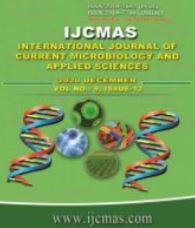


 National Academy of Agricultural Sciences (NAAS)
National Academy of Agricultural Sciences (NAAS)

|
PRINT ISSN : 2319-7692
Online ISSN : 2319-7706 Issues : 12 per year Publisher : Excellent Publishers Email : editorijcmas@gmail.com / submit@ijcmas.com Editor-in-chief: Dr.M.Prakash Index Copernicus ICV 2018: 95.39 NAAS RATING 2020: 5.38 |
Waste control has gone through alterations in most recent numerous years, and as of now reusing and recuperation are an extra imperative consideration the waste from industries is a significant thought, not just due to the amount created anyway likewise because of its capacity detrimental effect on ecological and human wellbeing. Fused waste administration might be a structure for planning and forcing new waste-administration frameworks and for examining and upgrading present frameworks. Inside this structure, every specialized and nontechnical added substances of the administration gadget should be investigated together. Here we are worried about textile and tanneries squander sway and the amount and nature of the poisons released. Talking quickly a gigantic measure of profluent produced from tanning and material businesses is being released ashore or into water sources. These effluents are described by physical, synthetic or organic attributes, example, BOD COD. These effluents additionally contains certain optional plant supplements, example, nitrogen, phosphorous, sulfur, magnesium, calcium and so forth just as micronutrients and hefty metals. Expansion of tannery waste and material waste causes deflocculation of soil particles, increment in nitrogen, phosphorous level accordingly causing antagonistic impact on the yields bushes trees just as water bodies. It has been noted salinization and alkalization of groundwater have been taken note. Actual attributes of these don't allow its removal straightforwardly into inland water or ashore for satisfaction of horticultural practices. Henceforth, Today a current day coordinated waste control that imbues maintainability into all added substances while considering help convey and call for is required.
 |
 |
 |
 |
 |